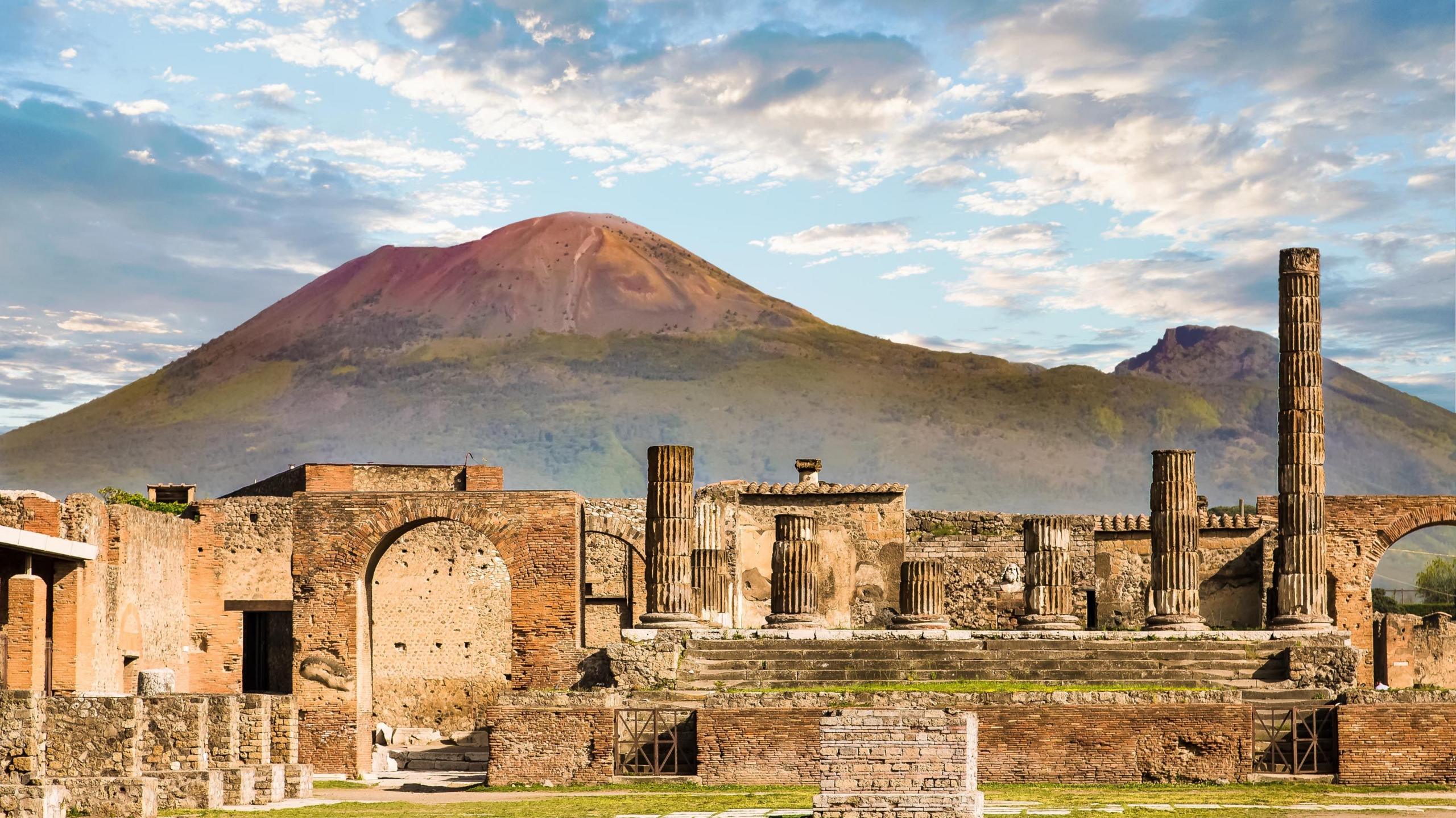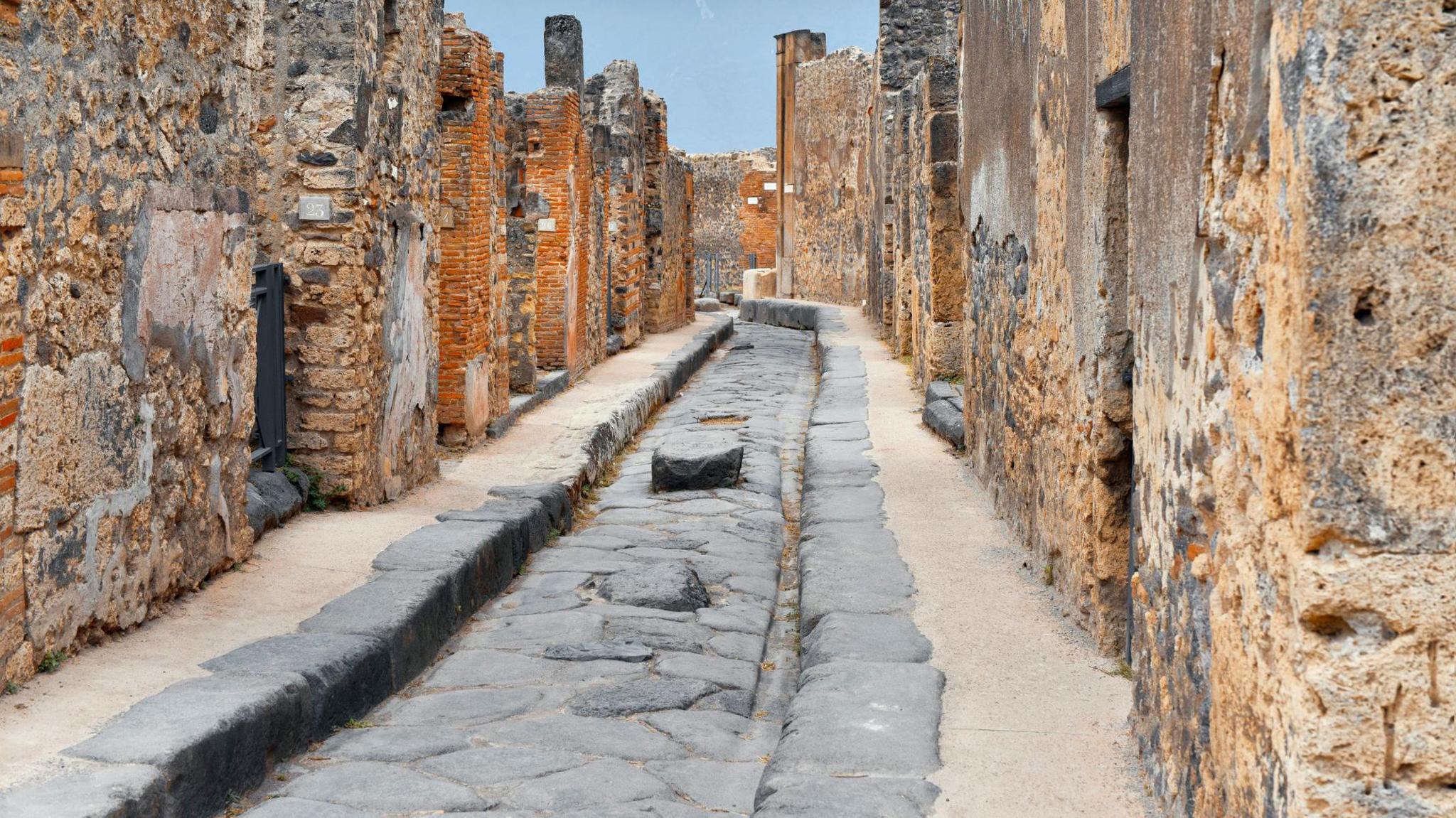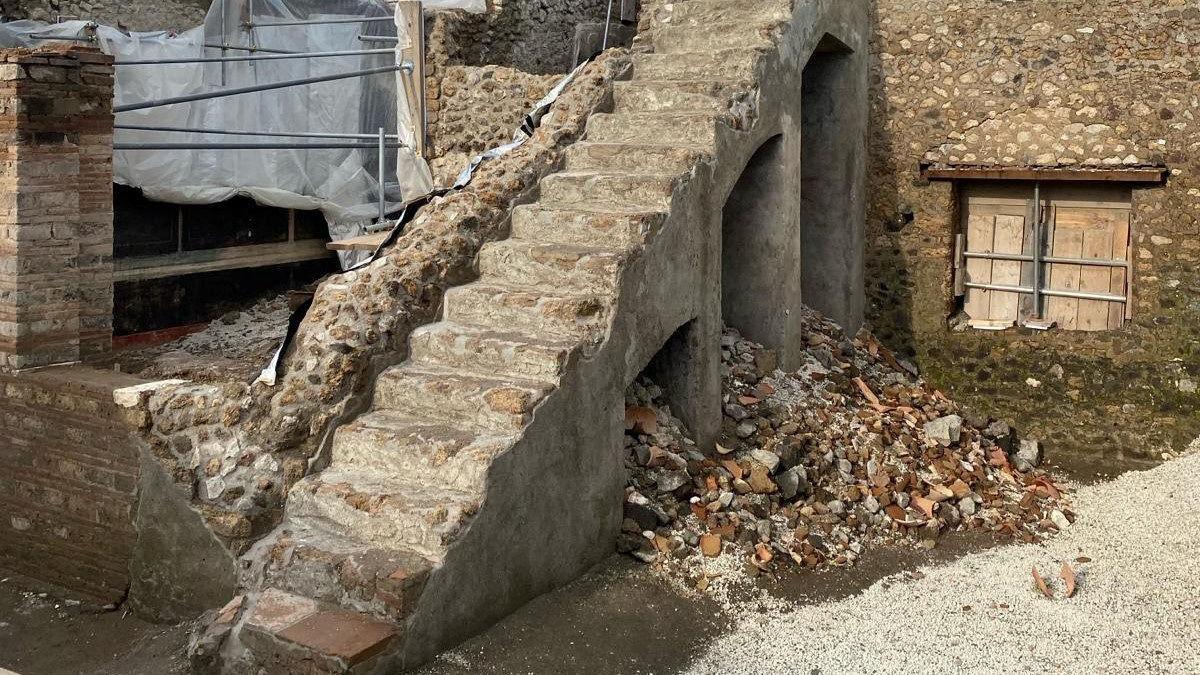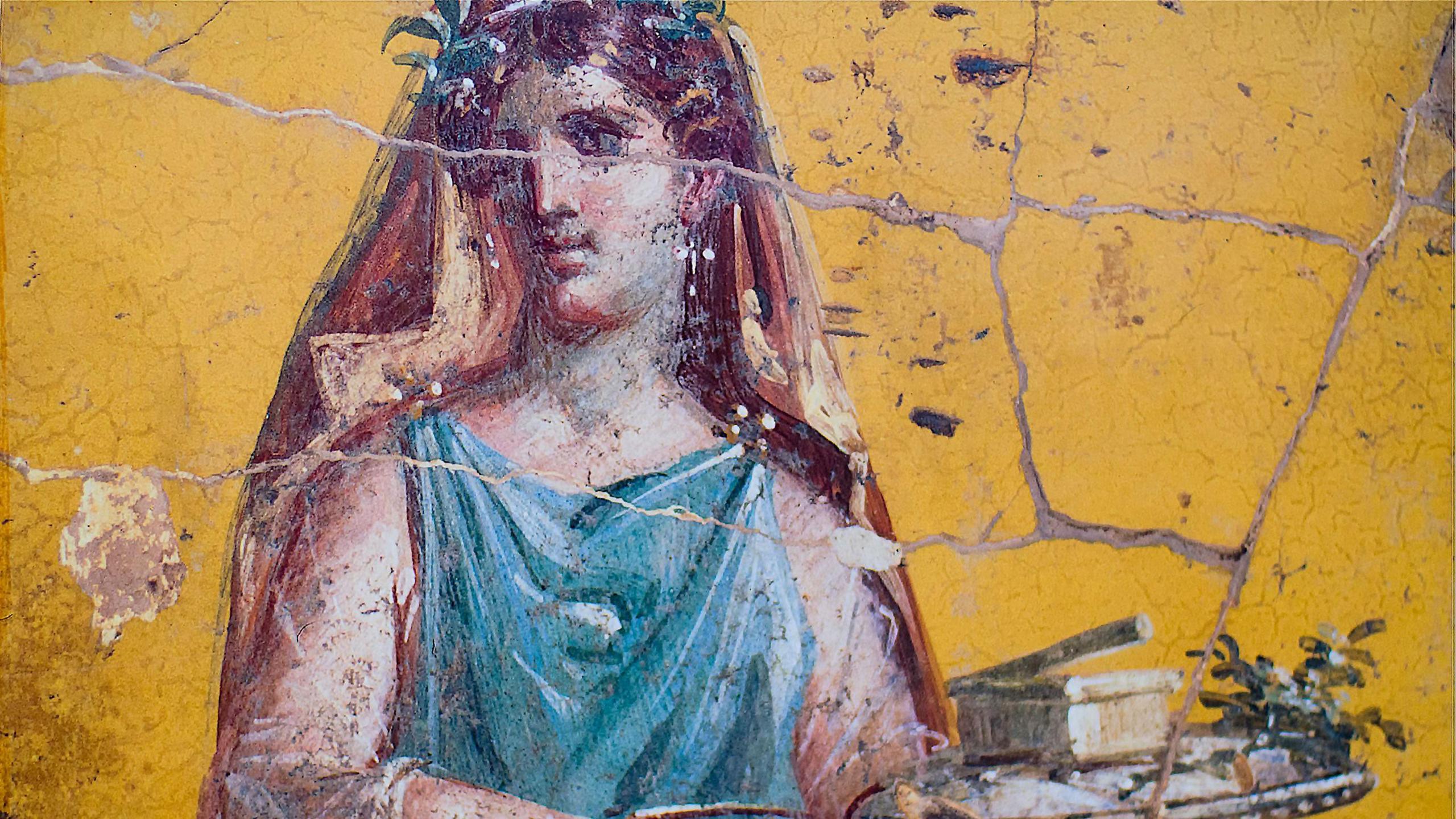People returned to live in Pompeii after giant eruption

- Published
Archeologists have discovered new evidence which suggests people returned to live among the ruins of Pompeii after the eruption of Mount Vesuvius around 2,000 years ago.
The ancient Roman city was home to between 10,000 and 20,000 people before the nearby Vesuvius volcano erupted in AD79.
Pompeii and many of the people living there were buried under ash.
The city, including its buildings and objects, was preserved by the ash and much seemed untouched until it's rediscovery in the 16th century.
Now archeologists at the site in Italy say they have uncovered new evidence that shows survivors returned to the devastated city much sooner.
Archaeologists make big discovery in ancient city of Pompeii
- Published14 August 2024
What is Pompeii and why does it matter?
- Published12 April 2024
Graffiti drawn by children nearly 2,000 years ago found in Pompeii
- Published29 May 2024
What is Pompeii and what happened there?

Pompeii is a site of huge historical importance
Pompeii is a UNESCO World Heritage Site and Italy's second most-visited tourist spot after the Colosseum in Rome.
Before the eruption of Mount Vesuvius in 79AD it was a bustling city.
When Mount Vesuvius erupted, it covered the whole city in a thick layer of ash
Lumps of solid lava called pumice stones rained down on the town for 18 hours.
The ash buried the buildings, the objects and even the people who lived them, preserving everything.
This has made it a site of huge historical importance giving archeologists a glimpse into how people lived at the time.
What does the new evidence show?

Archeologists believe some people returned to the destroyed ruins and lived in the upper floors
Experts believed before that survivors had returned to the ruins, but now archeologists say this has been confirmed by new research.
Archaeologists say these previous residents were joined by others looking for a place to settle. They describe the new living arrangements to be more like a camp.
"Judging by the archaeological data, it must have been an informal settlement where people lived in precarious conditions, without the infrastructure and services typical of a Roman city," before the area was completely abandoned in the fifth century, they said in a statement.

Previous archeology work has focussed on objects and frescoes or murals like this one
While some life returned to the upper floors of the old houses, the former ground floors were converted into cellars with ovens and mills.
"Thanks to the new excavations, the picture is now clearer: post-79 Pompeii reemerges... a kind of camp, a favela among the still recognisable ruins of the Pompeii that once was," said Gabriel Zuchtriegel, director of the site.
Some evidence that the site was reoccupied had been found in the past.
But the site director said in the rush to access Pompeii's colourful frescoes and still-intact homes, "the faint traces of the site's reoccupation were literally removed and often swept away without any documentation".
